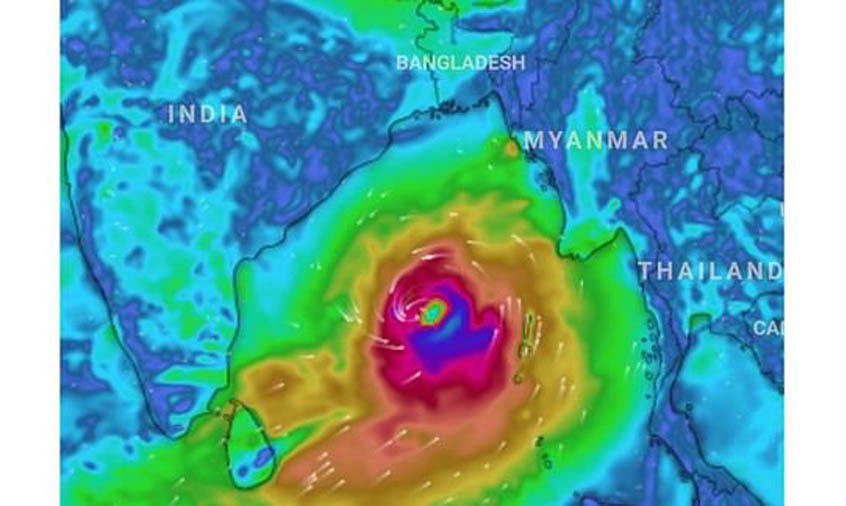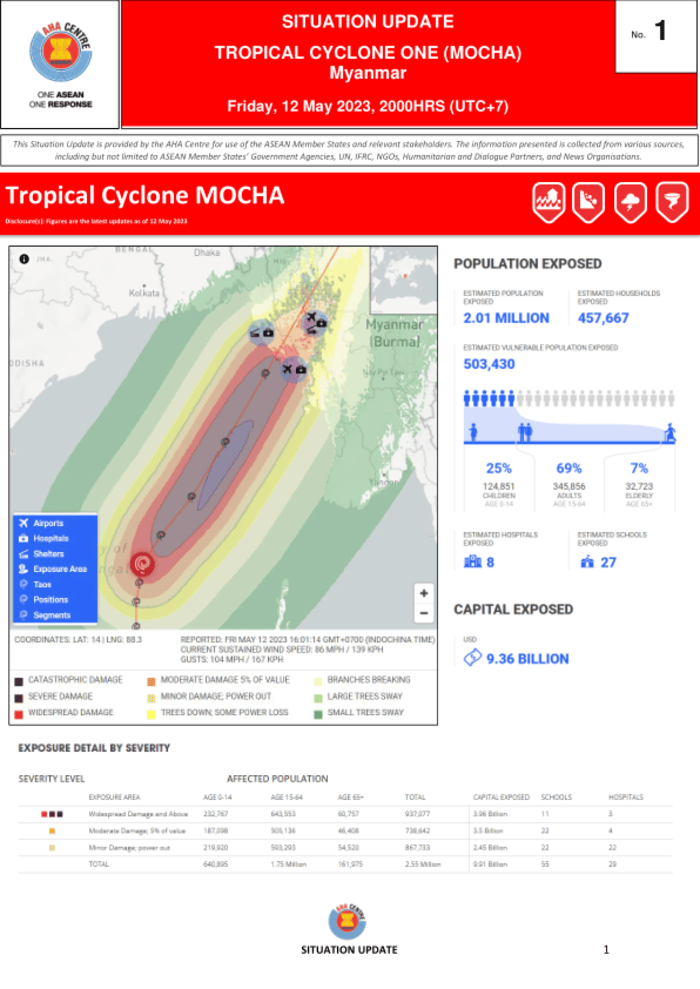
Residents begin to leave Saint Martin’s Island as Cyclone Mocha looms
The residents of Saint Martin’s Island in Cox's Bazar have begun to leave home for the mainland as Cyclone Mocha approaches the coast after turning into a very severe cyclonic storm. The locals said more than 200 families moved to Teknaf from the island on Thursday and Friday, reports
Residents begin to leave Saint Martin’s Island as Cyclone Mocha looms
Updated :
May 13, 2023 12:13 AMShare this news
The residents of Saint Martin’s Island in Cox's Bazar have begun to leave home for the mainland as Cyclone Mocha approaches the coast after turning into a very severe cyclonic storm.
The locals said more than 200 families moved to Teknaf from the island on Thursday and Friday, reports bdnews24.com.
Many Islanders took trawlers to Shah Porir Dwip in Teknaf on Friday to move to relative safety from the cyclone.
“We never left home during previous storms but the situation looks intense this year. Seven people from our family have moved to safety,” said Nur Jahan Begum, a resident of the island.
“There is a tendency among some residents of moving to a relative's house in Teknaf if such a storm signal is issued. But the number is not too high,” said Muhammad Kamruzzaman, the chief executive of the Teknaf Upazila administration.
He urged people to follow instructions while moving to safety instead of panicking. “We’ve prepared 17 storm shelters on Saint Martin’s Island. Hotels, resorts, schools and bungalows are also ready for evacuations.”
Cyclone Preparedness Programme teams, Border Guard Bangladesh, the Coast Guard, the navy, police and local government representatives and village police were put on high alert, Kamruzzaman said.
Mocha, which was centred about 1,000 km away from the coast of Bangladesh, intensified into a “very severe” cyclonic storm on Friday. The cyclone is likely to continue to move north-
northeastward on Saturday and intensify before crossing the coast between Cox's Bazar and Kyaukphyu Island in Myanmar by Sunday afternoon.
Heavy rains and thunderstorms are expected in the bay areas on Saturday evening as the cyclone hurtles towards the coasts. The lower lands at the coasts may experience 2-2.7 metres higher tides than usual, which could cause flooding.

Bangladesh raises cyclone warning to great danger signal 8
The Met Office has raised the storm warning steeply by four notches to great danger signal No. 8 for three seaports and 12 districts with very severe cyclone Mocha moving closer to the coasts. The three ports are Chattogram, Cox’s Bazar and Payra. Cox’s Ba









